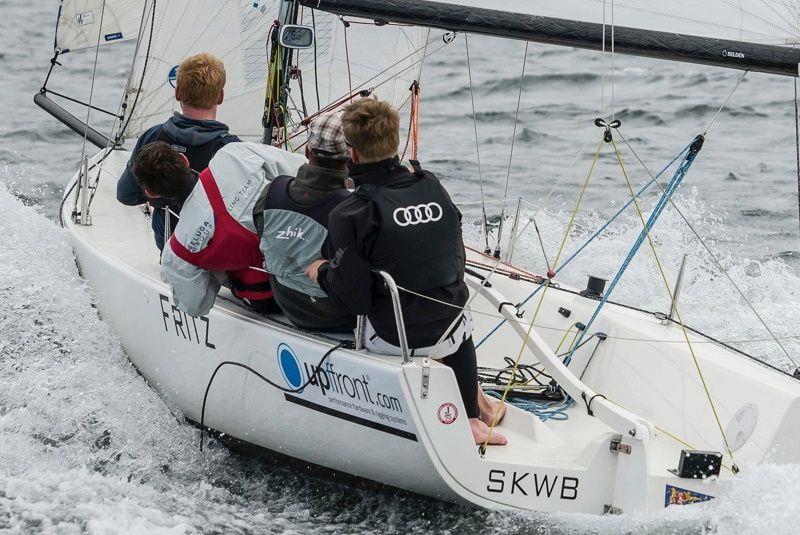
Superswift - the perfect light air spinnaker sheet
by Calanach Finlayson 4 Mar 2023 09:00 UTC

Gottifredi Maffioli's Superswift © upffront.com
The world of modern sailing ropes is bright and bountiful. But from the plethora of brands, colours, materials and styles, Gottifredi Maffioli's Superswift perpetually stands out.
The family run Italian firm pioneered the 'Swift' style of lines more than two decades ago which have since been imitated by so many other manufacturers. Superswift features that iconic grippy, durable cover with a compact braid DSK78 Dyneema core. In this article we explore why this material lends itself so well to light weight spinnaker sheets.
Swift cover
The Swiftcord cover is easily recognisable by its 16 strand braid of thick twisted yarns. The resulting textured finish provides excellent grip in jammers and ratchet blocks as well as on winches. This blend of Dyneema and Polyester based non-slip fibre gives that combination of durability and holding power. This is the exact same construction used in the hollow-braid (no core) Swiftcord rope.
Super core
If the 'swift' part of the name refers to the cover, then it's the core that makes it 'super'. Compact 78 is a tightly braided 12 strand Dyneema core material which lends itself to applications requiring low stretch and light weight. The compact nature of the line, due to its short braid angle, means it is less likely to snag or suffer damage when used without cover.
Water absorption and handling
Where Swiftcord can become heavy through water absorption, the addition of a Compact 78 core in Superswift removes this issue. The line remains relatively stiff throughout its lifetime, retaining its shape and resistance to kinking.
Tapered sheets
The aforementioned characteristics of Superswift make it ideal for spinnaker sheets on dinghies and sportsboats or light air sheets on larger yachts. Tapering the working end of the sheet produces a slick, lightweight finish with a singlebraid eye splice which can easily pass through sheet blocks in case of a continuous sheet or where the inboard end is attached to a reeler.
Superswift really is hard to fault and it's not difficult to see why it has stood the test of time so well.
If you have any questions about your Superswift, please feel free to email us at , or click the link below to see our full range:
